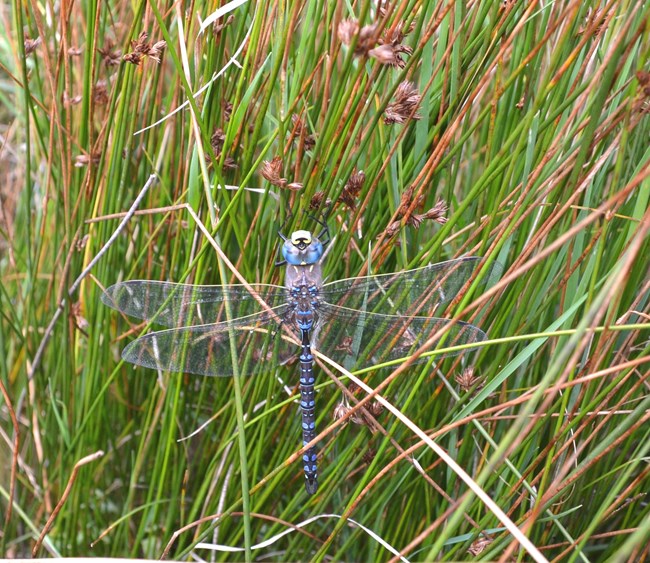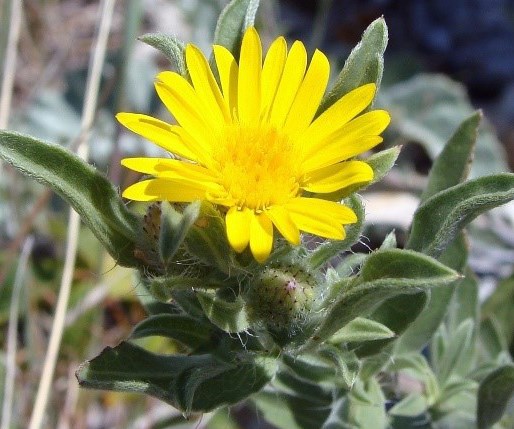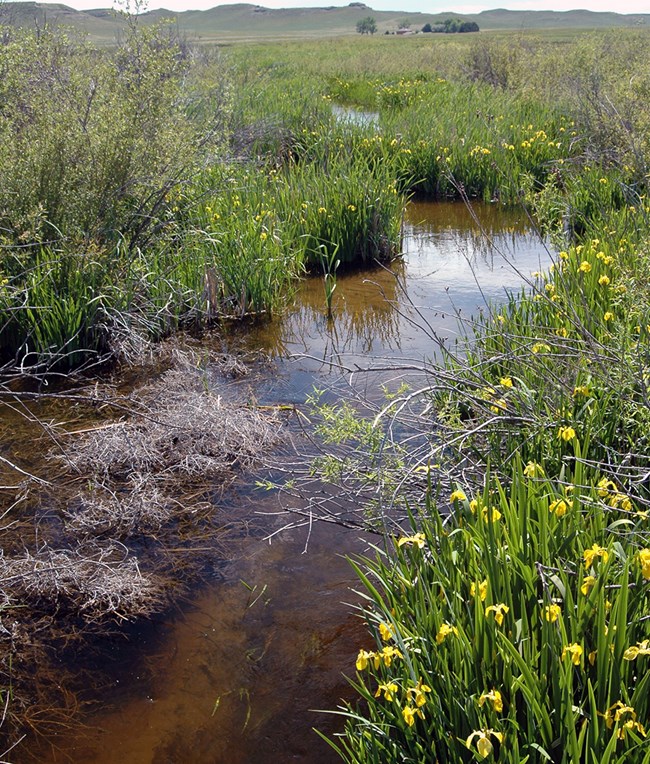Part of a series of articles titled Plant Community Monitoring in Northern Great Plains Network Parks.
Article • Plant Community Monitoring in Northern Great Plains Network Parks
Plant Community Monitoring at Agate Fossil Beds National Monument

NPS
Overview
The 3,000 acres of mixed-grass prairie and a broad floodplain of the Niobrara River at Agate Fossil Beds National Monument in Nebraska provide food and shelter to many animal species, and beautiful scenery that park visitors enjoy. The lush valley and remote rocky outcrops at Agate Fossil Beds National Monument are home to over 363 plant species.
Plants in these park habitats are sensitive to many stressors, including invasive exotic species, habitat fragmentation, river flow management, climate change, and altered fire and grazing regimes. Park management actions, such as prescribed fire and exotic species control, may also affect plant communities. The Northern Great Plains Inventory and Monitoring Network monitors plants at Agate Fossil Beds National Monument to meet the immediate needs of managers for current information and to understand what changes are occurring in plant communities over time.

NPS

NPS
What We Monitor
In collaboration with the NPS Northern Great Plains Fire Ecology Program, we established monitoring plots in areas above the Niobrara River floodplains (uplands) throughout the park in 2011. A subset of these plots are monitored each year on a rotating basis. In 2012, we began monitoring plants in the riparian (riverside) area along the Niobrara River in the park. At each plot, we record the native and exotic plant species found and the vegetation cover for each species, a measure of how much ground is covered by the plants.

NPS
Plant Communities in the Park
The Agate Fossil Beds National Monument plant species list includes 363 species. In 2018, we found 143 unique plant species. Over 275 plant species have been found since plant monitoring began in 1998. Native grasses are abundant and the dominant component of prairie on the park. Common grasses include needle and thread (Hesperostipa comata), prairie sand reed (Calamovilfa longifolia), western wheatgrass (Pascopyrum smithii), and slender wheatgrass (Elymus trachycaulus).
Forty-seven exotic plant species have been found, including Canada thistle (Cirsium arvense), a noxious species in Nebraska. Two plant species, pondweed (Potamogeton spp.) and reed canarygrass (Phalaris arundinacea), are potentially new for the park. Samples of these species will need to be collected for verification. Since monitoring began, we have discovered 40 rare plant species on the park, including species such as spotted fritillary (Fritillaria atropurpurea) and buff fleabane (Erigeron ochroleucus) that are imperiled in Nebraska.
More Details
- Native plant diversity is moderate compared to other grasslands in the region.
- No trends (increases or decreases) in the number of native plants have been detected since monitoring began, but this could change if annual invasive exotic brome grasses (Bromus spp.) increase.
- Uplands and riparian areas have a greater cover of native plants than exotic plants. The river valley has a fairly diverse assemblage of plants, but is more invaded by exotic plants than the upland areas; Kentucky bluegrass (Poa pratensis) and paleyellow iris (Iris pseudacorus) threaten these riparian habitats. There is no evidence that exotics have increased since monitoring began on the park, but exotics are still a concern.
- Prescribed fire can have positive effects on prairie, but it may take five or more years to see these effects; plots that had not burned in five to six years had more native species and lower cover of exotic plants than plots that had burned more recently.

NPS
Did You Know?
Even though grasses cover most of the landscape at Agate Fossil Beds National Monument,they only account for 20 of the 109 species recorded during monitoring. Forbs (flowering plants that are not woody and not a grass or grass-like) are much more diverse, and while they don't occupy as much space as grasses, they color the prairie with wildflowers in the spring. Native forbs are an important component of healthy prairies.
One plant with beautiful flowers found at the park is cause for concern though. The paleyellow iris (Iris pseudacorus) is a favorite ornamental plant due to its showy flowers and is now considered invasive across North America. This iris was first introduced to the Niobrara Basin in 1906 in a manmade, spring-fed pond at Agate Springs Ranch, upstream from the park. We have found this plant in about 65% of the plots we monitored along the Niobrara River in Agate Fossil Beds National Monument. The paleyellow iris has the potential to alter habitat and reduce native plant diversity. Efforts to control this exotic species are underway at the park.
For More Information
Visit the Northern Great Plains Network website to read more about plant monitoring at Agate Fossil Beds National Monument.
Protocol Contact, Northern Great Plains Inventory and Monitoring Network: Isabel Ashton
Summary by Northern Great Plains Network, updated in 2019
Last updated: November 7, 2019
